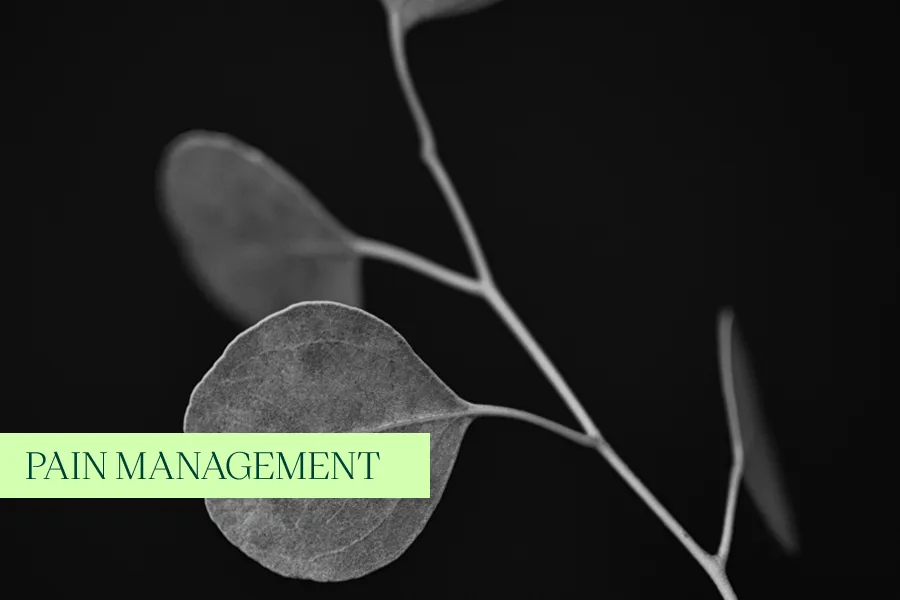This persistent discomfort not only affects daily activities but also creates challenges to work and enjoyment. The impact is profound, with the cost of chronic pain in 2018 reaching an estimated $139 billion in Australia, attributing to diminished quality of life and productivity losses.
Managing chronic pain can be complex, demanding a comprehensive approach that integrates both pharmaceutical and non-pharmaceutical methods.
In the following blog, we explore the potential of medicinal cannabis as a contributor to the treatment of chronic pain.
What is chronic pain?
Chronic pain is pain that lasts beyond normal healing time after injury or illness, generally lasting 3 to 6 months. It is a common and complex condition, and the pain experienced can be anything from mild to severe. The defining characteristic of chronic pain is that it is ongoing and experienced on most days of the week.
New analysis in this report shows that compared with people without pain, people with chronic pain are more likely to:
- be female and older
- have long-term conditions
- stay longer in hospital
- report limitations to daily activities.
There are two main types of chronic pain:
- Nociceptive pain: pain is caused by damage to body tissue and usually described as a sharp, aching, or throbbing pain and can be caused by a range of conditions or factors including injury, surgery, arthritis, osteoporosis or musculoskeletal conditions.
- Neuropathic pain: pain is a type of pain that occurs following damage to the nervous system itself. The sensations associated with this type of pain are described as burning or shooting pains. The skin can be numb, tingling or extremely sensitive.
Chronic pain commonly coexists with insomnia, anxiety, depression, post-traumatic stress disorder (PTSD), and substance use disorders such as opioid and alcohol misuse.
What is the role of medicinal cannabis in the treatment of chronic pain?
The use of medicinal cannabis for the treatment of pain can be traced back to over 5000 years ago when it was utilised in Chinese medicine to treat pain associated with childbirth, rheumatic pain, malaria, and even constipation.
Today, medicinal cannabis is considered to be an emerging therapy in the treatment of chronic pain as its use is the subject of ongoing research.
The majority of the studies that have been done on the use of cannabinoids in pain have studied Delta-9-tetrahydrocannabinol (THC) or THC-rich extracts. Most studies looked at using cannabinoids as “adjuvant” or “add-on” treatments, used in addition to other pain medicines.
Research up until now has demonstrated a moderate benefit using medicinal cannabis in the treatment of chronic pain. There is evidence that medicinal cannabis may help manage comorbidities of chronic pain, such as sleep problems, anxiety, appetite suppression. It may also be effective in managing symptoms in some chronic conditions associated with pain, including HIV, multiple sclerosis, fibromyalgia, and arthritis.
Additionally, there is an interest at present as to whether the use of medicinal cannabis products for chronic pain can result in a reduction of use of strong opioids.
If this were the case, deaths and incapacity from opioid overdoses could be reduced, given that cannabinoids have fewer adverse outcomes.
It’s important to note that while some individuals with pain have reported that their use of opioids has been reduced through the use of medicinal cannabis, research is ongoing in this area.

How does Medicinal Cannabis work in the treatment of Chronic Pain?
Despite robust supportive data from animal models, current clinical trial evidence for THC and CBD efficacy in humans suffering from chronic pain is limited. The therapeutic effects of medicinal cannabis primarily arise from the cannabinoids Delta-9-tetrahydrocannabinol (THC) and/or cannabidiol (CBD) that are present in the Cannabis Sativa plant.
Whilst the complete mechanism of medicinal cannabis in the treatment of pain is not fully understood, it is thought that it is mediated through the effects of THC and CBD on the Endocannabinoid System (ECS).
Is Medicinal Cannabis suitable for all patients with chronic pain?
Current guidelines recommend that chronic pain management should follow a multidisciplinary ‘whole person’ approach to treatment that targets biopsychosocial factors. This means that a range of non-pharmacological as well as pharmacological strategies should be considered as a part of an individualised plan to manage chronic pain.
Patients diagnosed with chronic pain that is not adequately controlled can talk to their doctor about the suitability of medicinal cannabis as a part of their treatment plan.
It is important to ensure that any measures taken as a part of a treatment plan for chronic pain are effective at reducing pain and positively impacting secondary outcomes such as improving sleep, mood and quality of life.
It may be of benefit for individuals using medicinal cannabis in the treatment of chronic pain to keep a diary, which includes dosing information and monitoring for efficacy, effects on mood and function, and possible side effects. This aims to help slowly titrate cannabis to symptom control, while minimising adverse events. Generally, once individuals using medical cannabis are stabilised on an effective dose they do not require dose escalation over time.
More research is needed Medical Cannabis in the treatment of Chronic pain
The Australian Government’s National Strategic Action Plan for Pain Management recognises that the burden of pain in Australia is growing and pain is associated with comorbidities such as mental health and disability. The overarching aim of this plan is to “Improved quality of life for people living with pain and the pain burden for individuals and the community is minimised”.This plan supports the need for ongoing research and clinical guidance on the use of emerging pharmacological and non-pharmacological interventions, including medicinal cannabis. This must keep pace with rising consumer expectations and be accompanied by effective communication strategies.
Chronic Pain in Endometriosis: Potential for improved outcomes?
One area of growing interest is in the treatment of Endometriosis. Endometriosis affects roughly 10% (190 million) of reproductive age women and girls globally. It is a chronic disease associated with severe, life-impacting pain during periods, sexual intercourse, bowel movements and/or urination, chronic pelvic pain, abdominal bloating, nausea, fatigue, and sometimes depression, anxiety, and infertility. There is currently no known cure for endometriosis and treatment is usually aimed at controlling symptoms.
Endometriosis has significant social, public health and economic implications. It can decrease quality of life due to severe pain, fatigue, depression, anxiety and infertility. Some individuals with endometriosis experience debilitating pain that prevents them from going to work or school. Painful sex due to endometriosis can lead to interruption or avoidance of intercourse and affect the sexual health of affected individuals and their partners. Addressing endometriosis will empower those affected by it by supporting their human right to the highest standard of sexual and reproductive health, quality of life and overall well-being.
Women with endometriosis have a four times greater risk of chronic opioid use compared to women without endometriosis. Opioids may be ineffective in managing pain from endometriosis and the tolerance and dependence they are associated with naked opioids unsuitable for the long-term treatment required by those with the condition.
An online survey of women aged 18 to 45, living in Australia, and with surgically confirmed endometriosis sought to determine the prevalence, tolerability, and self-reported effectiveness of cannabis in women with endometriosis.The results indicated that women who utilised cannabis reported good efficacy in reducing pain and other symptoms of endometriosis. Despite this, there is still little evidence supporting its use in this setting and more research is desperately needed.
Currently, the potential use of medicinal cannabis for pain management in people with endometriosis is being explored by Victorian and NSW researchers in a study conducted by Deakin University and Western Sydney University.
To learn more about the role of medicinal cannabis in the treatment of chronic pain and conditions such as Endometriosis or ask any questions, please contact our team on (03) 9077 2446 or hello@astrid.health, or visit one of our dispensaries.
